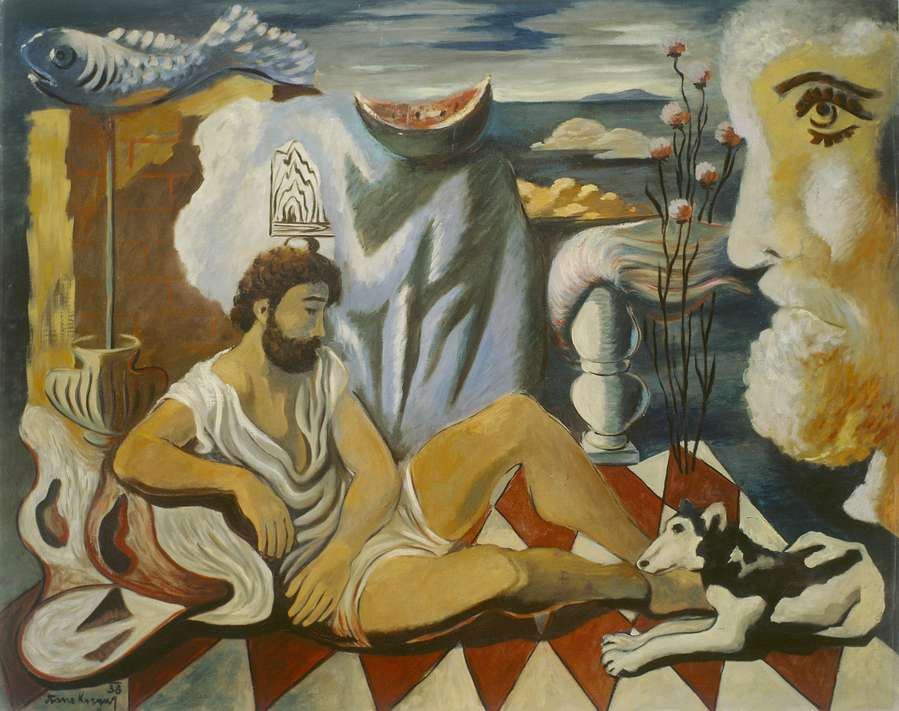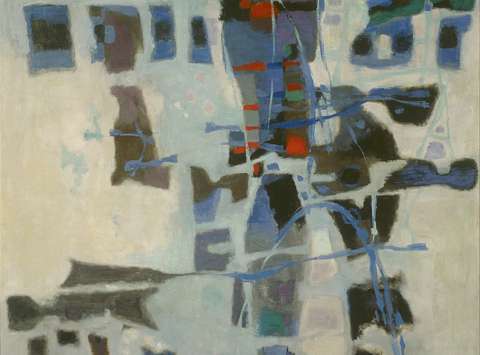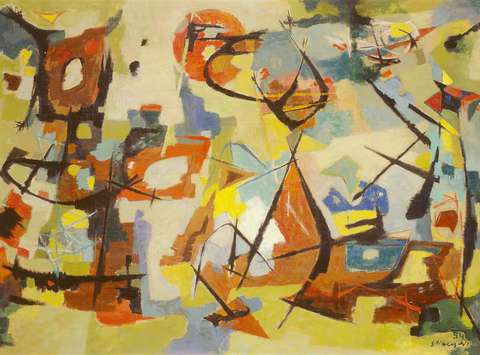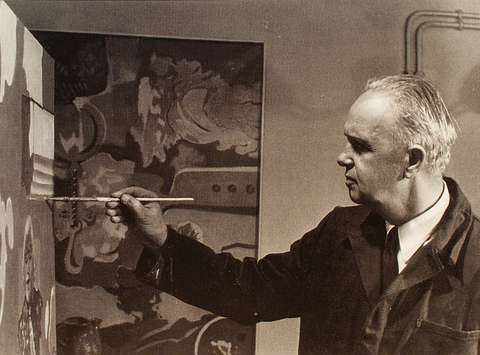Stane Kregar (1905–1973)
Light of Freedom
The exhibition of works from the Stane Kregar Gallery of St. Stanislav's Institution is dedicated to one of the key personalities of Slovene modernism and the most visible representative of post-surrealism. It features both well-known and rarely displayed paintings (oil on canvas) covering all periods of his oeuvre from surrealism and abstract art to new figuration.
Stane Kregar: “When I created my first abstract painting, I felt as if I had just found the light of freedom, I could finally take a full breath.”
The fifth independent exhibition of Stane Kregar's artwork reveals another part of his vast body of work in a series of exhibitions held in the Bežigrad Galleries: Painting exhibition 1954–1964, Painting exhibition 1960–1963, Drafts for stained windows 1967–1973, Drawings, watercolour and gouache paintings 1953–1968.
This time around the focus is on his artwork from the period 1953–1970, except from the paintings Self-portrait (1937) and Odysseus (1938). During that period and especially in the second half of the 1950s, Kregar gradually abandoned objectivism
and veered to abstract painting. He drew inspiration from landscapes and events from people’s (often tragic) lives.
At the start of the 1960s he once again started painting human figures and objects.
Stane Kregar's distinctive approach comes through in every single style.
Stane Kregar was born on 10 November 1905 in Zapuže (Dravlje District) in Ljubljana.
In the period 1911–1917, he attended primary school in Šentvid nad Ljubljano and went on to study at the Diocesan Classical Gymnasium in the same locality, graduating in 1925. (1925–1930). He was ordained a priest in 1929 in Ljubljana. From 1930 to 1935, he studied at the Academy of Graphic Arts in Prague with Professor Max Švabinský. After returning to Ljubljana, Kregar taught drawing at the Diocesan Classical Gymnasium until it was abolished in 1945. He never returned to teaching after the end of World War II. He became an independent artist, which was his main occupation until his death. In 1971 he received the Prešeren Award for lifetime achievement. Kregar died on 1 August 1973 in Ljubljana.
The paths of Kregar's creativity
The painter Stane Kregar made decisive interventions in the development of Slovene modernism on no less than three occasions: in the mid-1930s he created his own version of surrealism; after 1953, he was the first artist to paint extremely bold and radical colour compositions; a decade later, he introduced the elements and sign symbolism of new figuration into the predominant art informel (zebras, antennae, astronauts, objects and scenes transposed from the media, motifs from the political and social history of that time, etc.). In a strange way, he was like Gustave Moreau a century earlier – a loner with a good sense of the spirit of the times. He was never an avant-gardist, and refused to be called one. At the same time, he was deeply rooted in the representative mechanisms of modernity, which he did not transform into lyrical visions, raising reportage data, the inescapable artistic and social "here and now" to the level of timeless metaphors, allegories and symbols. His atelier saw the creation of sketches, studies and paintings that were often inspired by nature or his own mood, but he was one of very few Slovene artists who, though carefully, kept responding to the concrete artistic and human challenges of that time. In Kregar's case, this is not a mere platitude, but a constant creative impulse he obeyed until his last breath. He understood and shaped his surrealism as a personal language that goes beyond any political conjuncture or normative framework of a certain “-ism”.
Excerpt from text by Tomaž Brejc
Colophon
Production: Bežigrajska galerija 1 / MGML
Exhibition curator: Miloš Bašin
Artist: Stane Kregar
Design: Miloš Bašin
Photodocumentation: Marjan Smrke / Zavod Sv. Stanislava, Ljubo Struna
Realisation of the exhibition: Technical Service MGML, Miloš Bašin
The exhibition was made by: City of Ljubljana
Location
Vodovodna 3
1000 Ljubljana
T +386 1 43 64 057
F +386 1 43 66 958
E bezigrajska.galerija1.2@gmail.com
Opening hours
Tuesday to Friday: 10:00–18:00
Saturday: 10:00–14:00
Sundays, Mondays: Closed
24 and 31 December: 10:00–14:00
1 January, 1 November, 25 December: Closed
Tickets
Free entry.



